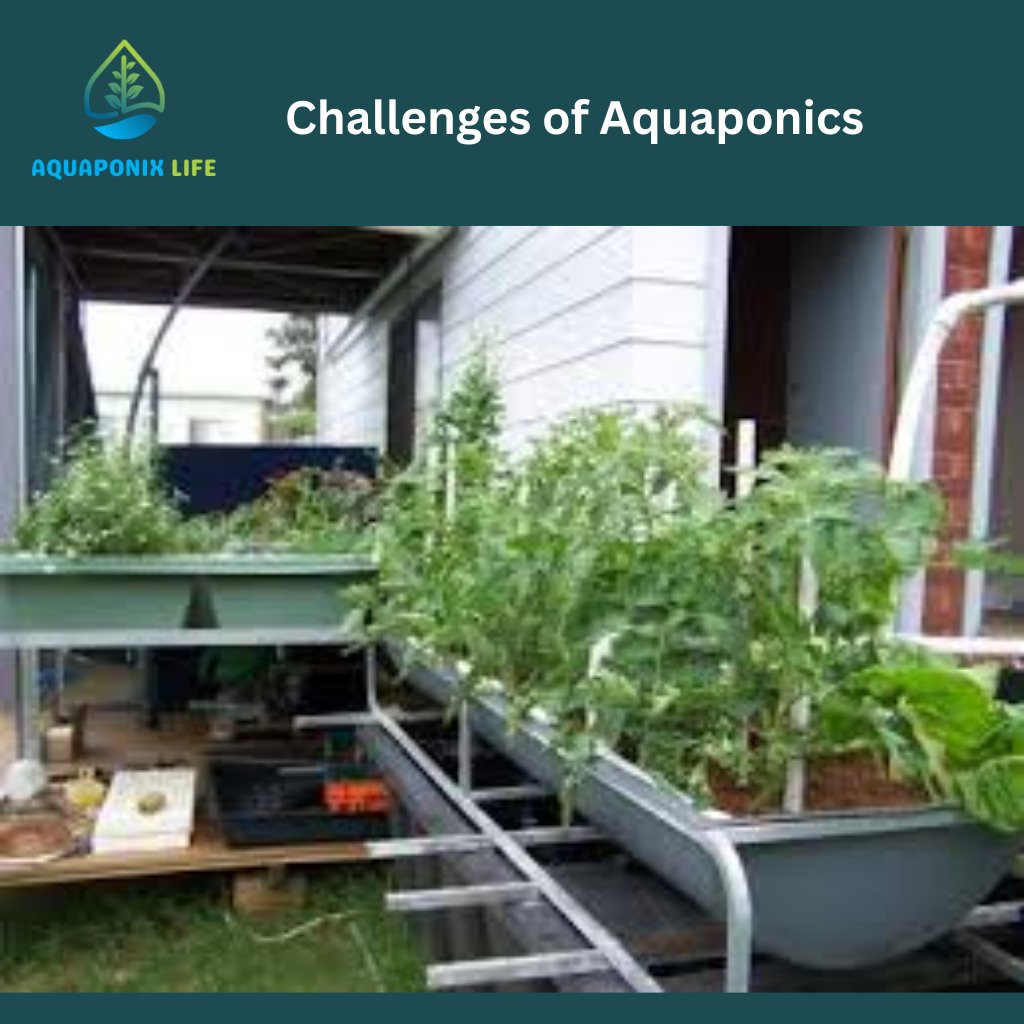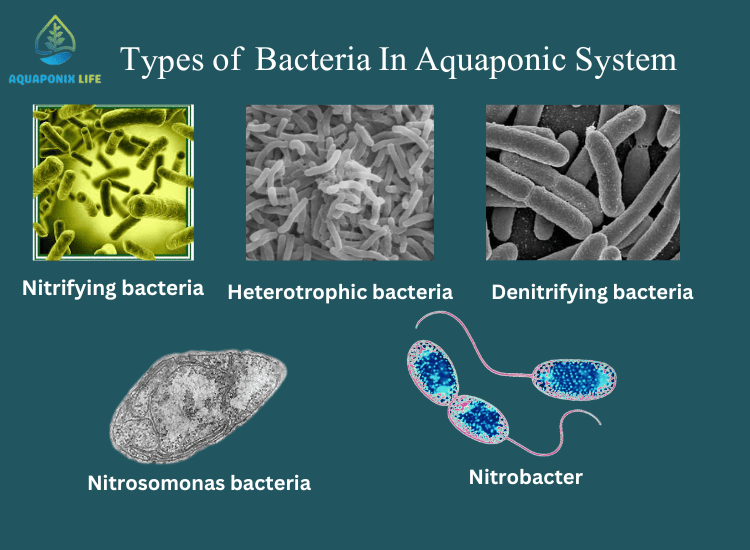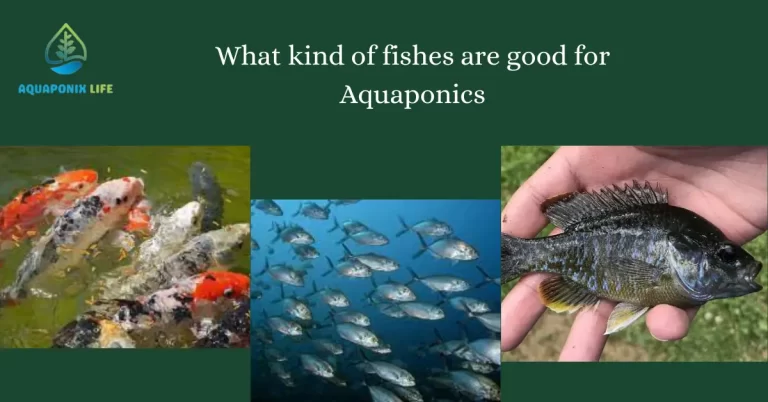Unveil the Myths of Aquaponics And how to solve them
Introduction:
As we step into this modern world of sustainable agriculture, aquaponics is considered a stylish and innovative technique. It also merges aquaculture and hydroponics into a strong, united, and effective system. This technique is gaining much more importance day by day because of its eco-friendly approach. This system offers a way to cultivate plants and fish together. Although many resources highlight the benefits of aquaponics, it’s crucial and essential to delve into the lesser-discussed disadvantages of aquaponics.
Like other growing systems it also has some myths and cons. In this article we will discuss them in detail and also resolve those issues faced by growers and many professionals:

- The Complexity of Balancing Aquaponic Ecosystems
- Disadvantages of Aquaponics With Investment Point of View:
- Limitations on Plant and Fish Varieties
- Technical Knowledge and Management Skills Required
- Disease and Pest Management in Closed Systems
- Dependence on Electricity and Technological Systems
- Water Usage and Conservation Challenges
- Space Requirements and Urban Limitations
- How It Affects the Environment:
- Market Demands and Buying Trends:
The Complexity of Balancing Aquaponic Ecosystems is one of Disadvantages of Aquaponics:
Aquaponic Ecosystems: A Complex and Balanced Relationship requires Symbiotic Relationships in Aquaponics. It also has Challenges in Maintaining Balance and Water Quality Management
Fish waste serves as a nutrient source for plants, while plants filter and purify water. The cyclical process of nutrient cycling requires careful observation to ensure each component receives necessary nutrients. Healthy plants contribute to improve water quality for fish and create a harmonious relationship.
In order to grow such living things, we should always keep an eye on our aquaponics system. This biodiversity may be affected by things like weather changes and power outages. There may be unexpected problems as well. It’s always possible for things to go wrong, so it’s important to be prepared for such a change. We should monitor the things like pH, oxygen levels, and nutrients on regular basis to make sure everything is just right. Keeping an eye on ammonia and nitrate levels is super important for the fish and plants well growth. We also need to understand how oxygen in the water affects the nutrients and the overall balance of the system.
Furthermore, Its not easy to create sustainable aquaponics system. It involves some factors like looking at the whole picture, always learning, and committing to eco-friendly practices. In simple terms, aquaponics might seem complicated at first, especially for beginners. But, with the right knowledge and a bit of guidance, it can become a fun and manageable adventure for new enthusiasts diving into this eco-friendly farming method.
Disadvantages of Aquaponics With Investment Point of View:
Another myth is that aquaponics requires a heavy amount of investment due to complex parts and specialised equipment. The procurement of basic elements such as biofilters, growing beds, and high-quality fish stocks is part of the original cost. The ongoing investments in electricity, water treatment, and specialised feeding supplies are part of the operational costs.
These drawbacks create a financial barrier for aspiring aquaponic practitioners and also emphasise the need for strategic planning and long-term financial commitment.
Acknowledging and addressing the disadvantages of aquaponics is crucial for those who are interested in this sustainable farming practice. Furthermore, We can use DIY solutions and choose the right scale for fulfilling our needs.
Limitations on Plant and Fish Varieties:
Further, the aquaponic journey is a unique challenge for the enthusiasts, because they face the issue of limitations on plant and fish varieties. As symbiotic relationship has numerous benefits but it also faces several challenges and drawbacks also. In the realm of aquaponics, the cons of aquaponics materialize in the form of restricted options for plant cultivation. This symbiotic environment has produced some varieties of plants thriving, but there is a marked lack of diversity in comparison to traditional soil methods. One of the disadvantages of aquaponics is emphasized in this aspect, as growers may be forced to choose crops on their own.
Similarly, the issue of fish selection is also a matter for aquaponics. While some species prove conducive to the aquaponic ecosystem, others may struggle or disrupt the delicate balance. The importance of careful selection of fish stocks is reinforced by this inherent limitation. These disadvantages of aquaponics highlight the need for balance between aquatic and plant ecosystem components.
Technical Knowledge and Management Skills Required:
Embarking on the aquaponics journey we come to know another Myth and challenge of aquaponics. Although it is creative but technical expertise and management skills are crucial for its efficient implementation.
When one looks beyond traditional farming methods and demands a comprehensive understanding of this agricultural system, it becomes evident that there is considerable complexity. The downside of the method is becoming evident as aquaponics enthusiasts manage a complex combination between growing plants and raising fish, which are symphonies where biological and mechanical components align. It is necessary to be able to operate this complicated system with precision and swiftly.
Disease and Pest Management in Closed System:
Aquaponics are both beneficial and challenging in the control of diseases and pests. Shut down systems are at risk of disease outbreaks and can cause a deterioration in the balance among fish and plants.
In order to address these challenges, there is a need for an active approach in maintaining fish and plant health. For sustainable aquaponics, it is essential to dispel myths and embrace a more nuanced approach to managing diseases and pests. A holistic understanding and commitment to proactive measures are essential for a resilient and thriving closed system.
Dependence on Electricity and Technological Systems:
In addition to, it has another myth, depends upon electricity and technology systems which contribute to give more challenges of aquaponics. As these are essential elements but also create complicated issues that increase their complexity. Aquaponics relies heavily on electricity for essential components such as pumps, aerators, and monitoring systems. Thus these reliance makes it vulnerable to blackouts or interruptions.
If the technical components that are essential for maintaining a delicate balance go wrong, the disadvantages of aquaponics can be illustrated. The delicate balance of biology and technology in aquaponics is vulnerable to technical failures, which would require extensive understanding as well as real action on the ground to deal with potential disruption. It is necessary to acknowledge the system’s dependency on technology in order to dispel myths about aquaponics. Aquaponics is heavily dependent on technology, which is critical for the effective setup. Both the advantages and disadvantages ensures a resilient and thriving system that takes into a balanced approach.
Water Usage and Conservation Challenges:
The balancing of water use and conservation is a complex challenge for aquaponics. Careful attention to water levels and quality is required in the closed loop system, which underlines the necessity of sustainable water management. In order to minimise water loss and improve efficiency, effective water saving measures are essential.
However, aquaponics does not eliminate water scarcity but requires more awareness of the responsible use of water. Regular monitoring of water quality and system components is vital for a healthy ecosystem. And embracing water conservation measures ensures a more environmentally conscious and sustainable approach to aquaponic farming.

Space Requirements and Urban Limitations:
In the fascinating world of aquaponics, there’s a challenge we need to talk about: the space it requires and the limitations it faces in urban settings. Let’s break it down.
What’s the Deal? Aquaponics is amazing, It is a great challenge to manage space for working fish and plants together effectively. Usually, it is a common myth to have a wide space to set up the equipment. By doing so it is useful for the proper functioning of plants and fish growth.
The cons of aquaponics become noticeable when we consider the space it takes up. This might be a bit tricky if you’re working with limited space, especially in urban areas where every square foot matters then what can we do to resolve this issue?
Urban farmers can think vertically to address these challenges. They use walls and stacking systems to fit everything in it. This all can be done in an elbow room to meet its requirements. As the aquaponics community grows, finding clever solutions to space challenges becomes key.
How It Affects the Environment:
Alright, let’s chat about how aquaponics shakes hands with the environment – the good and the things we need to watch out for.
Firstly, It uses less water than traditional farming. Secondly, it cuts down the need for synthetic fertilizers because fish waste becomes a natural fertilizer for plants.
Sometimes, if not managed well, aquaponics can throw a little out-of-balance party in the water. Too much fish waste or not enough good bacteria can make the water quality go wonky. We want to avoid that because healthy fish and happy plants need top-notch water.
When we talk about the challenges of aquaponics, sustainability is in the spotlight. It’s about finding that sweet spot where we get the benefits without causing harm.
Market and Consumer Acceptance:
Let’s dive into the world of aquaponics and see what people are saying – both the good and the things we need to work on.
Aquaponics is like the cool kid in the farming block. It’s sustainable, it’s innovative, and it’s got that eco-friendly charm. But, here’s the catch. Not everyone is on the aquaponics bandwagon yet. Some folks are still getting used to the idea of fish and plants teaming up to grow our food.
First of all, Why Does It Matter: When we talk about disadvantages of aquaponics, market and consumer acceptance is a big player. If people aren’t totally sold on the idea, it can slow down the aquaponics party. It’s like trying to introduce a new dance move – some folks might need a bit of convincing before they join in.
The challenges of aquaponics in the market are like finding the right playlist for a party. We need to understand what people want, address their concerns, and show them why aquaponics is the cool move in sustainable farming. As more people get curious and try it out, the market vibe for aquaponics can hit a new high.
FAQs:
Q1: Is aquaponics low maintenance?
Ans: Yes off course, it doesn’t too much costs for maintenance because there is no weeding, watering and fertilizers.
Q2:What is the problem statement for aquaponics?
Ans: Poor water quality directly affects plants and fish growth. To get successful in aquaponics we should optimize some factors such as oxygen, pH , nutrients levels and temperature.
Q3: Do plants grow slower in aquaponics?
Ans: Some plants grow faster in aquaponics because it gets nutrients 24 hours.
Q4: What’s the lack of plants in aquaponics?
Ans: Iron, calcium, magnesium, zinc, manganese and copper are some of the deficiencies. The lack of nutrients in aquaponics plants may result in reduced growth, yield, and quality due to imbalanced or inadequate nutrient levels.
Q5:What is the key to a successful aquaponics system?
Ans: Aquaponics system layout and components are essential for a successful aquaponics system. It also requires water filtration, design and size which are very crucial to consider. Filtration is vital for both solids removal and bacterial conversion of waste products. This waste is generated by the fish into essential nutrients required by the plants for development. Filtration is like having two superheroes on your aquaponics team – one cleaning up the mess, and the other turning that mess into plant fuel.
Conclusion:
By understanding its disadvantages of aquaponics, we can better equip ourselves to harness its full potential. We can adopt right way of paving for a more sustainable and efficient method of food production. Aquaponics, often shrouded in myths, is in reality a versatile, sustainable, and productive method of farming. By addressing these misconceptions, we can overcome these problems by adopting proper solutions to contribute a more sustainable and food-secure future. So, it’s not just about fish and plants; it’s also about what people think. Finding that sweet spot where aquaponics becomes everyone’s passion in the farming world – that’s the goal!
References: https://www.mdpi.com/2071-1050/7/4/4199







